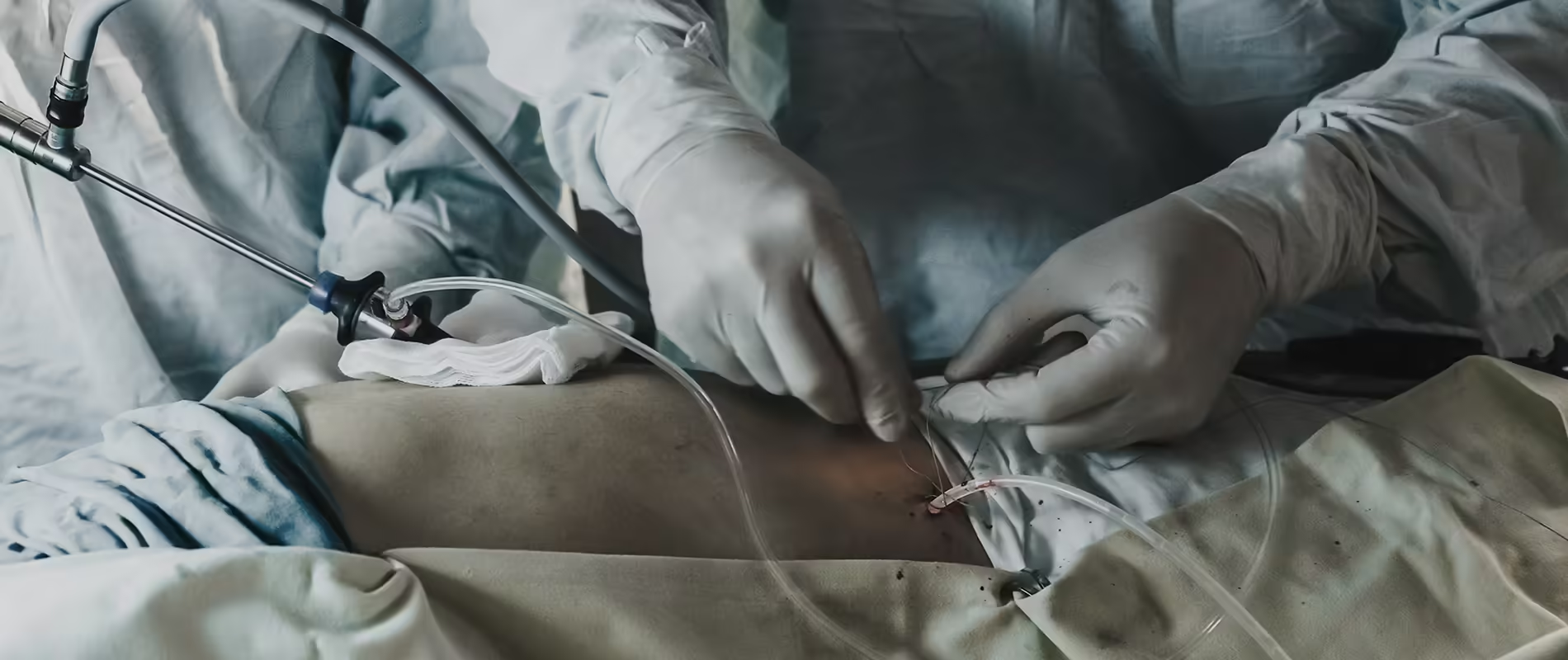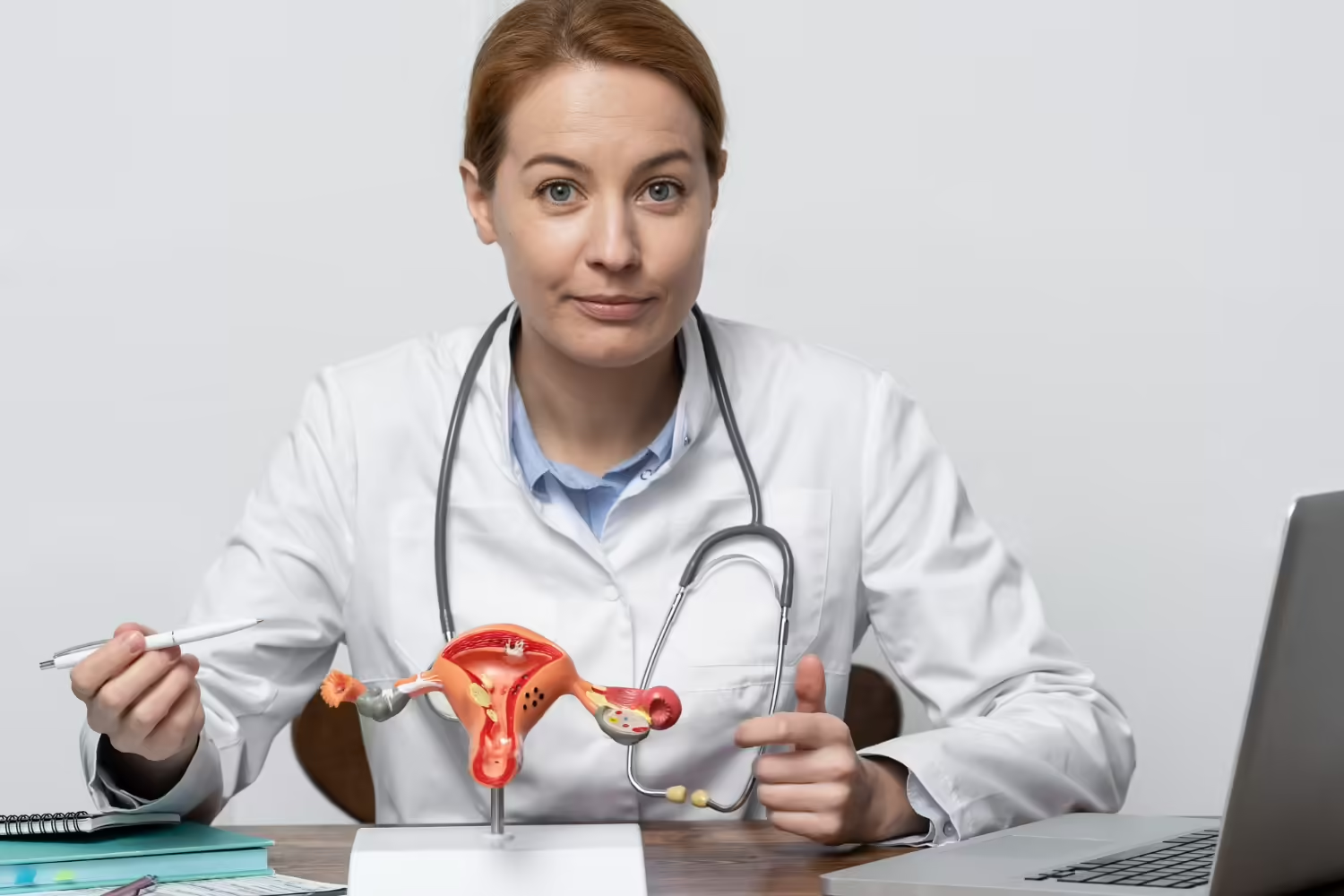
Endometriosis occurs when the endometrium grows on your ovaries, bowel, and tissues lining your pelvis. It’s unusual for endometrial tissue to spread beyond your pelvic region, but it’s not impossible. Endometrial tissue growing outside of your uterus is known as an endometrial implant. With endometriosis, the tissue can be found on the ovaries, fallopian tubes, or the intestines. The most common symptoms are pain and menstrual irregularities. Effective treatments, such as hormones and excision surgery, are available.
Causes
Experts think that menstrual blood with endometrial cells travels back through the fallopian tubes and passes out into the pelvic cavity where the cells stick to the organs. This is known as retrograde menstruation.
Genetics may also play a role in whether you get endometriosis. If your mom or sister has it, you’re more likely to get it & research shows that when there is a hereditary link, the disease seems to be worse in the next generation.
Symptoms
Many times, endometriosis has no symptoms. When symptoms are present, they may include:
▪ Abdominal cramps or back pain during menstruation.
▪ Severe menstrual cramps.
▪ Painful bowel movements or urination, especially during menstruation.
▪ Abnormal or heavy bleeding during periods.
▪ Painful sex.
▪ Difficulty becoming pregnant.
Diagnosis
To diagnose endometriosis and other conditions that can cause pelvic pain, your doctor will ask you to describe your symptoms, including the location of your pain and when it occurs.
Tests to check for physical clues of endometriosis include:
Pelvic exam. During a pelvic exam, your doctor manually feels (palpates) areas in your pelvis for abnormalities, such as cysts on your reproductive organs or scars behind your uterus. Often it’s not possible to feel small areas of endometriosis unless they’ve caused a cyst to form.
Ultrasound. This test uses high-frequency sound waves to create images of the inside of your body. To capture the images, a device called a transducer is either pressed against your abdomen or inserted into your vagina (transvaginal ultrasound). Both types of ultrasound may be done to get the best view of your reproductive organs. Ultrasound imaging won’t definitively tell your doctor whether you have endometriosis, but it can identify cysts associated with endometriosis (endometriomas).
Magnetic resonance imaging (MRI). An MRI is an exam that uses a magnetic field and radio waves to create detailed images of the organs and tissues within your body. For some women, an MRI helps with surgical planning, giving your surgeon detailed information about the location and size of endometrial implants.
Laparoscopy. In some cases, your doctor may refer you to a surgeon for a procedure (laparoscopy) that allows the surgeon to view inside your abdomen. While you’re under general anesthesia, your surgeon makes a tiny incision near your navel and inserts a slender viewing instrument (laparoscope), looking for signs of endometrial tissue outside the uterus.
Treatment
Treatment for endometriosis usually involves medication or surgery. The approach you and your doctor choose will depend on how severe your signs and symptoms are and whether you hope to become pregnant.
Pain medication: Your doctor may recommend that you take an over-the-counter pain reliever, such as nonsteroidal anti-inflammatory drugs to help ease painful menstrual cramps.
Hormone therapy: Supplemental hormones are sometimes effective in reducing or eliminating the pain of endometriosis. The rise and fall of hormones during the menstrual cycle causes endometrial implants to thicken, break down and bleed. Hormone medication may slow endometrial tissue growth and prevent new implants of endometrial tissue.
Therapies used to treat endometriosis include:
Hormonal contraceptives. Birth control pills, patches and vaginal rings help control the hormones responsible for the buildup of endometrial tissue each month. Most women have lighter and shorter menstrual flow when they’re using a hormonal contraceptive. Using hormonal contraceptives — especially continuous cycle regimens — may reduce or eliminate pain for some women.
Gonadotropin-releasing hormone agonists and antagonists. These drugs block the production of ovarian-stimulating hormones, lowering estrogen levels and preventing menstruation. This causes endometrial tissue to shrink. Because these drugs create artificial menopause, taking a low dose of estrogen or progestin along with Gn-RH agonists and antagonists may decrease menopausal side effects, such as hot flashes, vaginal dryness and bone loss. Your periods and the ability to get pregnant return when you stop taking the medication.
Progestin therapy. A variety of progestin therapies, including an intrauterine device (Mirena), contraceptive implant, contraceptive injection (Depo-Provera), or progestin pills, can halt menstrual periods and the growth of endometrial implants, which may relieve endometriosis signs and symptoms.
Aromatase inhibitors. Aromatase inhibitors are a class of medicines that reduce the amount of estrogen in your body. Your doctor may recommend an aromatase inhibitor along with a progestin or combination hormonal contraceptive to treat endometriosis.
Conservative surgery for endometriosis: If you have endometriosis and are trying to become pregnant, surgery to remove the endometriosis implants while preserving your uterus and ovaries (conservative surgery) may increase your chances of success. If you have severe pain from endometriosis, you may also benefit from surgery — however, endometriosis and pain may return.
In laparoscopic surgery, the surgeon inserts a slender viewing instrument (laparoscope) through a small incision near your navel and inserts instruments to remove endometrial tissue through another small incision. After surgery, the doctor may recommend taking hormone medication to help improve your pain.
Fertility treatment: Women with endometriosis can have trouble conceiving. If you’re having difficulty getting pregnant, your doctor may recommend fertility treatment supervised by a fertility specialist. Fertility treatment ranges from stimulating your ovaries to make more eggs to in vitro fertilization. Which treatment is right for you depends on your personal situation.
Diagnose endometriosis by consulting with the Best doctor for endometriosis – Dr. Safeena Anas Specialist – Obstetrics and Laparoscopic Gynaecology – NMC Hospital Al-Qusais.





